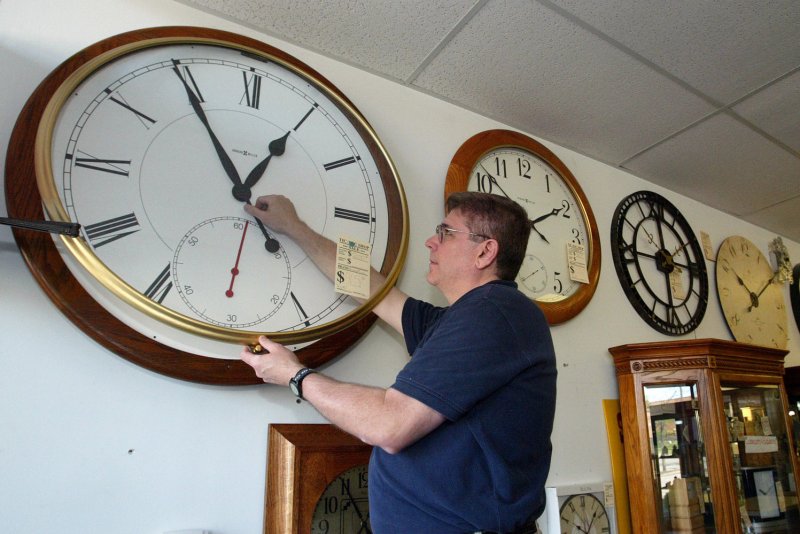Clock salesman Brent McCormick sets the time on an oversized wall clock at the Tic Toc Shop in Ellisville, Mo., on Oct. 29, 2005. President-elect Donald Trump on Friday called for the elimination of daylight saving time. File Photo by Bill Greenblatt/UPI |
License PhotoDec. 13 (UPI) — President-elect Donald Trump called for elimination of daylight saving time on Friday, calling it “inconvenient” and “costly.”
In a post on his Truth Social platform, Trump said he would work to ditch the practice of setting clocks ahead by one hour each spring and back in the fall.
“The Republican Party will use its best efforts to eliminate Daylight Saving Time, which has a small but strong constituency, but shouldn’t!” he wrote. “Daylight Saving Time is inconvenient, and very costly to our Nation.”
The statement comes after the leaders of Trump’s Department of Government Efficiency, Tesla and X CEO Elon Musk and Republican businessman Vivek Ramaswamy, indicated they too wanted to eliminate daylight saving time.
“Looks like the people want to abolish the annoying time changes!” Musk posted on X last month in response to an online poll conducted by one of his followers.
Ramaswamy replied, saying, “It’s inefficient & easy to change.”
Many lawmakers have advocated for the elimination of the practice in recent years, although disagreement remains over which time to keep — daylight saving time or standard time.
A November 2021 YouGovAmerica Poll found that 63% of Americans want to eliminate the practice of changing clocks twice a year to account for daylight saving time, which was adopted to preserve energy during World War II.
The energy savings netted by the practice are quite small in reality, the Department of Energy found in 2008, amounting to just 0.03% of electricity consumption over that year.
In 2023, federal legislation was introduced for a fourth time in five years that would make daylight saving time permanent. Called the Sunshine Protection Act, that effort, like its predecessors, eventually stalled out in committee.
